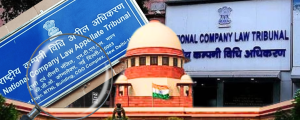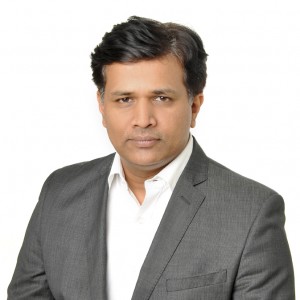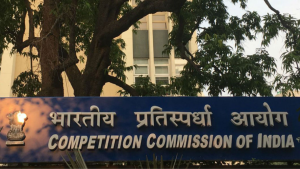

Timely Hindsight
The Karnataka Sakala Services Act, 2011 (‘Sakala’) was enacted to guarantee time bound government services to citizens of Karnataka. It was a pioneering effort and much was expected of it. Karnataka’s implementation has generally been said to be the most effective. In the last couple of years the efficacy (or lack of it) of Sakala has come under a lot of scrutiny. It is heartening to see engagement by civil society and academics so early on in the lifecycle to take stock and make necessary course correction.
Others have gone into detail on the practical aspects of the Sakala. I would like to make some general comments before going onto the topic assigned to me.
Some general observations
The Sakala Act entitles citizens who receive services beyond the time limits specified under it to a compensation. Such compensation is paid only when when citizens make an application for it. Earlier speakers have pointed out how the number of citizens seeking compensation is abysmally low. In my opinion there is a case for making payment of such compensation automatic. By giving the citizens an option to seek compensation, the Act is leaving open the possibility of them being influenced.
The compensation to citizens has been fixed at Rs. 20 per day arrived. I am given to understand that the number has been arrived at arbitrarily – as a good starting point since the whole concept was new. There is a need to revisit this. There is a wealth of global experience on designing penalties and fines that can be made use of. Sakala also provides for the penalty amount paid to the citizens to be recovered from the salaries of the concerned officials (after following due process). Given that penalties should be more punitive than compensatory, whether the amount paid to the citizens and recovered from the officials should be the same? There is a good case to make them different. For example it could be commensurate with the pay-scale of defaulting designated officer. The amount of such penalty also needs to be regularly recaliberated for inflation for it to be meaningful and effective.
All the evaluations that have been carried out so far have only measured whether services have been delivered within specified timelines. I would suggest that future studies look at how many days it has actually taken to deliver the services. This would not only help in revisiting the timelines set for the services but also help in understanding how many cases are delayed being entered into the software tracking tool. E.g., if the timelimit set is 30 days and there are an inordinate number of cases disposed of in 1 or 2 days clearly there is something on the data entry side that needs further study.
There is also a need to examine how many of the citizens make use of it repeatedly to analyse socio-economic patterns of usage. This could help in out-reach to citizens which as others have pointed out needs to be significantly improved.
Talking about socio-economic patterns of users brings us to the political economy of government services. It is well known how certain types of services provided by the state are used to fund the political system. Currently bringing a service under Sakala is completely under the control and discretion of the government. Now that there is sufficient experience with the working of this law, a mechansim to interact with citizens on the services to be moved to Sakala needs to be built in. There could also be a phased movement of all services to Sakala.
On administrative grievance redressal mechanisms as a way of reducing litigation
At the outset the larger question that we could address is: ‘What implication does Sakala have from an administrative law perspective’? Under Sakala are designated officers (as defined under Section 2(d) ) performing ministerial services or a quasi-judicial function? Since the designated officers carry out their duties under more or less well laid down rules and workflows that minimise discretion, it is definitely ministerial and administrative in nature. The answer to this question has an implication on the flexibility that these officers enjoy in carrying out their duties. If the officials are performing merely ministerial function then the rules under which they operate need to be laid down that much more clearly as these officers will be seen to be bound by rules and policy.
Conceptually speaking, having a time bound, precise well publicised mechanism in place does help filter out cases that can resolved with some application of mind. Competent officers and appellate officers are from the respective departments in the scheme of grievance redressal as it currently stands– which would help from a domain knowledge perspective but needs to be balanced with group interests that they may represent.
It is learnt that for about half of the rejections no reasons are given. Not many of them actually go on to appeal. Further, only 25% of the appellants are satisfied with their response. We need more data on reasons for rejections and persons who do not go in appeal to decide on efficacy of administrative mechanisms.
Sakala Act bars appeals to civil court on any matter that a competent officer or appellate authority is looking at (Section 18). However, the appellate order can still be appealled against at the civil court. Time limits for completing appeals ensures that not too much time is lost even if substantive justice is not rendered.
On a regular basis learnings from appeals should be incorporated into workflows and rules – otherwise there would be endless repetition of the same reasons for rejections and delays.
More empirical research and data analysis is required before one can comment on whether Sakala has lead to decrease in litigation.
(Comments during the course of the Regional Workshop and Consultation on implementation of Karnataka Sakala Services Act, 2011 held at National Law School of India University, Bangalore on 23 September 2016)
The views expressed in this article are solely those of the author’s and they do not represent the views of DAKSH.

Surya Prakash
RECENT ARTICLES


Testing the Waters: Pre-Implementation Evaluation of the 2024 CCI Combination Regulations

Not Quite Rocket Science

Administration of justice needs an Aspirational Gatishakti

-
Rule of Law ProjectRule of Law Project
-
Access to Justice SurveyAccess to Justice Survey
-
BlogBlog
-
Contact UsContact Us
-
Statistics and ReportsStatistics and Reports
© 2021 DAKSH India. All rights reserved
Powered by Oy Media Solutions
Designed by GGWP Design